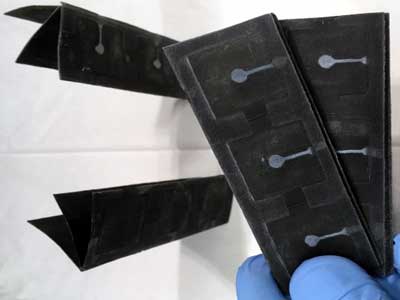Recently, researchers reported a new type of battery, made of paper and fueled by bacteria, it could overcome these challenges.
Scientists at the State University of New York made a paper battery by printing thin layers of metals and other materials on a paper surface. Then, they placed freeze-dried ‘exoelectrogens’ on the paper. Exoelectrogens are a unique kind of bacteria that can transfer electrons outside of their cells. The electrons, that are generated whilst the bacteria make electricity for themselves, pass via the cellular membrane. They are able to then make contact with external electrodes and power the battery. To activate the battery, the researchers added to water or saliva. Within a couple of minutes, the liquid revived the bacteria, which produced enough electrons to power a LED or a calculator.
The researchers also investigated how oxygen influences the overall performance of their device. Oxygen, which passes without difficulty through the paper, could absorb electrons produced by the bacteria before they reach the electrode. The research team found that although oxygen slightly reduced energy generation, the effect was minimal. This is due to the fact the bacterial cells were tightly connected to the paper fibres, which swiftly whisked the electrons away to the anode before oxygen could intrude.
The paper battery, currently, has a life of about four months. It can be used once and then thrown away. Researchers are working on conditions to improve the survival and performance of the bacteria, enabling a longer life.

















Related Items
Indian scientists develop flexible, safe, and eco-friendly battery
Invisible bacteria get a free ride in Delhi air
Indian scientists design fast-charging and long-lasting sodium-ion battery